Persepolis
Spent the morning at a wonder of the ancient world: the city of Persepolis, built about 500 BC. The original city covered a lot of ground, and the mud-brick construction of the larger city has not survived, but the “royal city” is in remarkably good shape, considering it was sacked by Alexander the Great’s army in 330 BC.
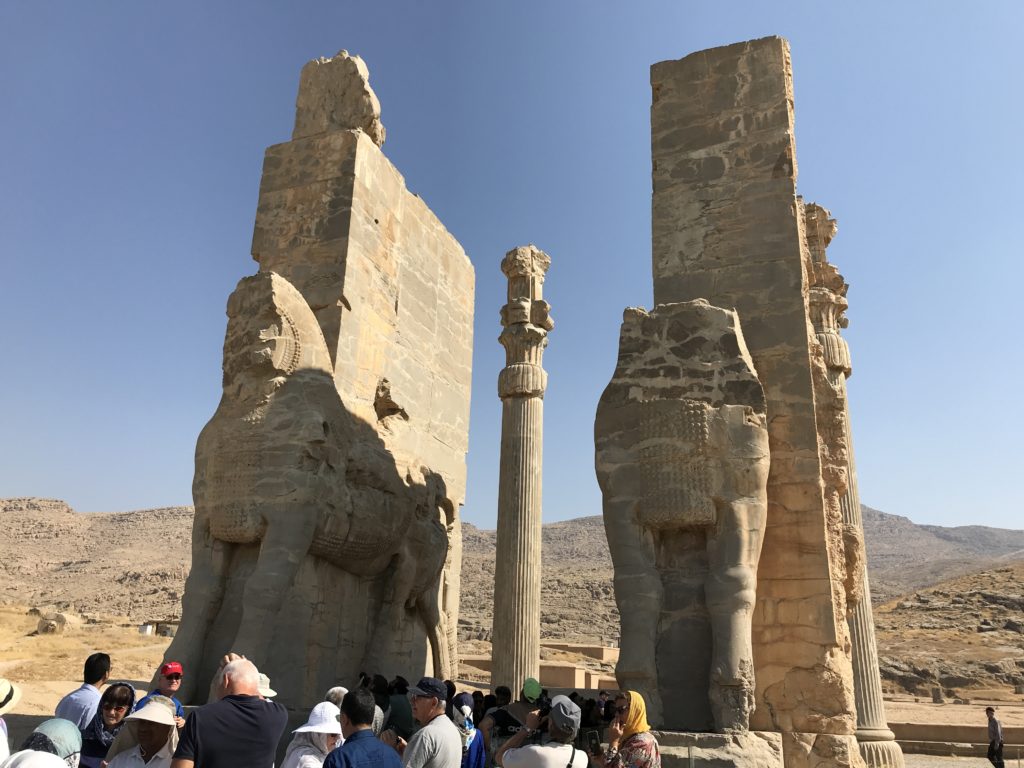
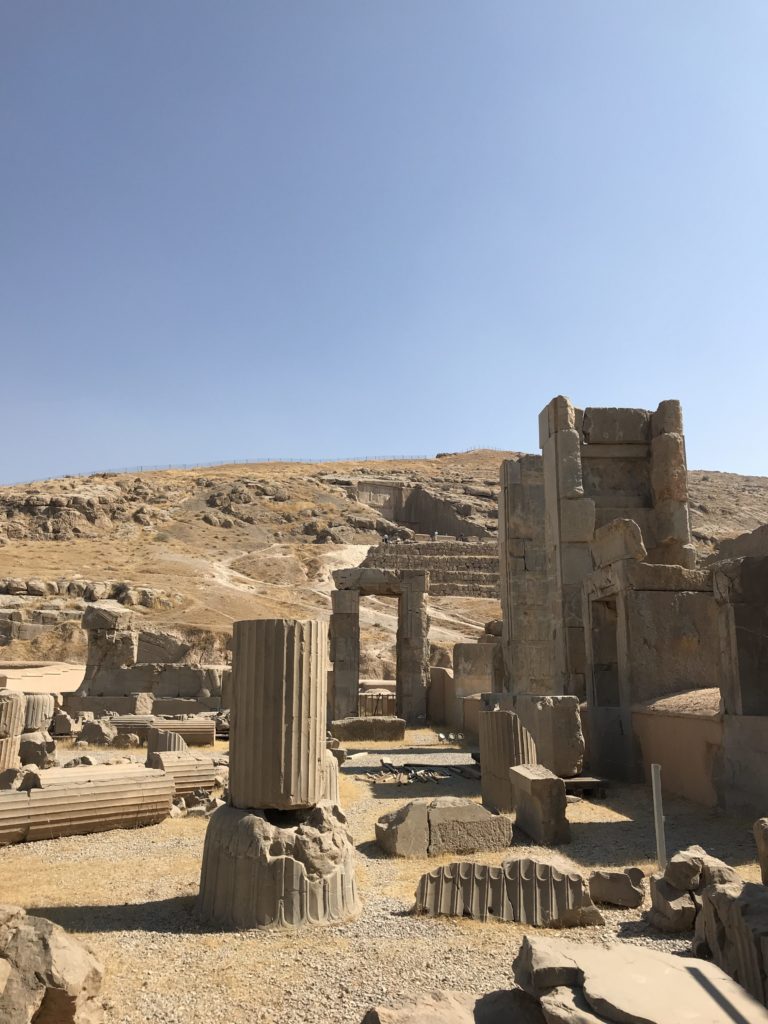
We also visited the tombs of three Persian kings: Darius, Xerxes, and Artaxerxes. Unfortunately the tombs were looted long ago, and were therefore found completely empty, except for broken coffins, and so they cannot be sure how the kings were buried, and with what or whom.
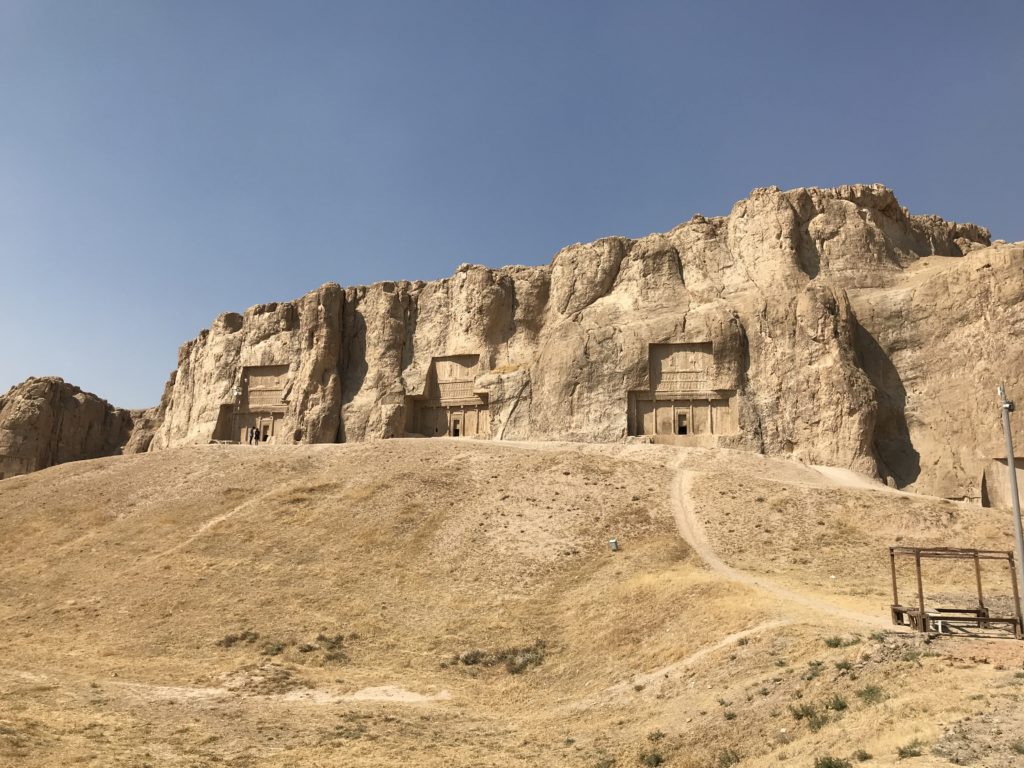
I was trying to think if I have ever visited any older historical site, and I honestly don’t think I have.
Shiraz
As the name might suggest, Shiraz was an early wine capital of the world. There are still vineyards, but in this alcohol-free land, they are now used for vinegar, alas.
Notable sights here included The Pink Mosque — it’s unusual because most tile work in Persian mosques is blue but for some reason this one is predominately pink.
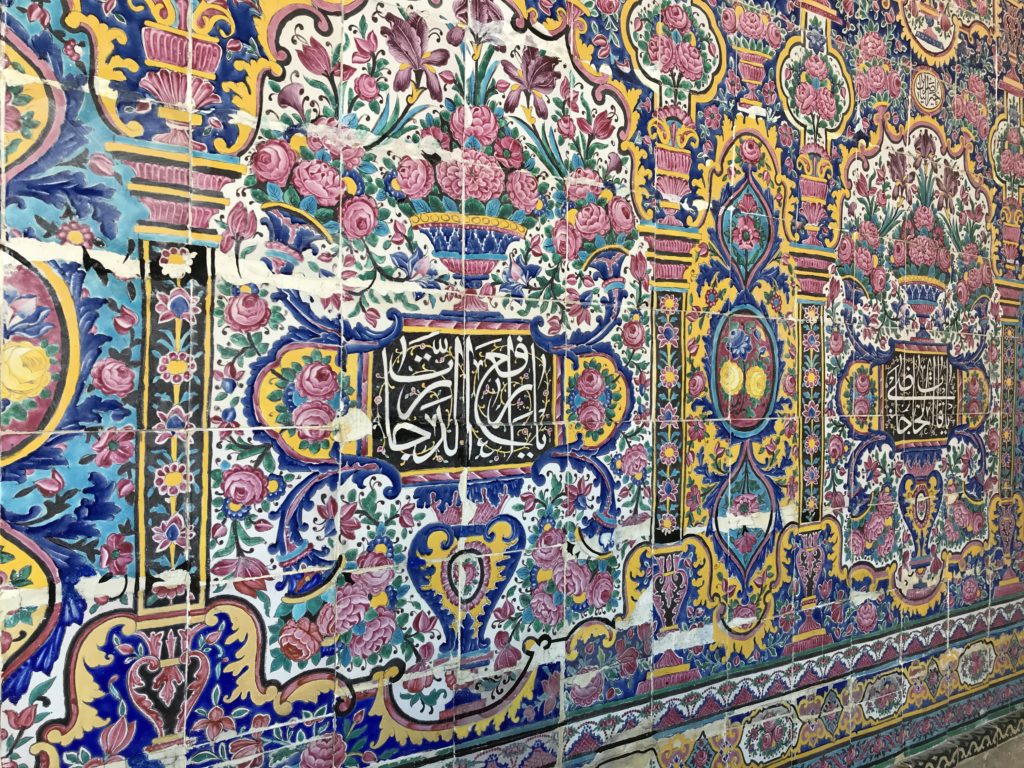
Our group also had the chance to tour a carpet store, to see and hear about the different types of Persian rugs, from both nomadic peoples and city workshops. The workmanship is amazing; Geoff and I didn’t buy anything, but several members of the group did.
This rug is 180 years old, done in wool and silk, and originally belonged to the store owner’s grandfather — the level of detail is exquisite. By the way, the gold surround is NOT a frame, it is part of the woven carpet. And no, it was not for sale!
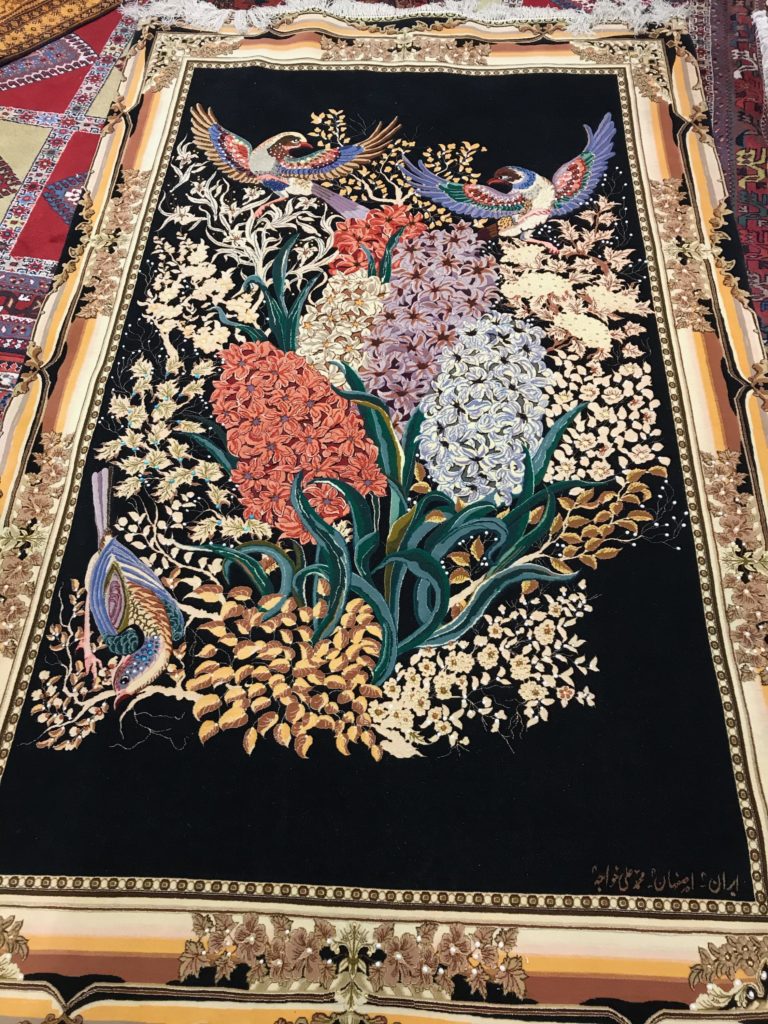
Love the Shiraz tile work. The Persepolis photos are similar to ruins we saw in Egypt. .
As I was admiring the carpet craftsmanship, I noticed that it had hyacinth flowers at the center. I would think that hyacinths are native to North America as we are so used to them here so I googled them and, apparently, they are native to Iran among other countries, which I found very surprising…